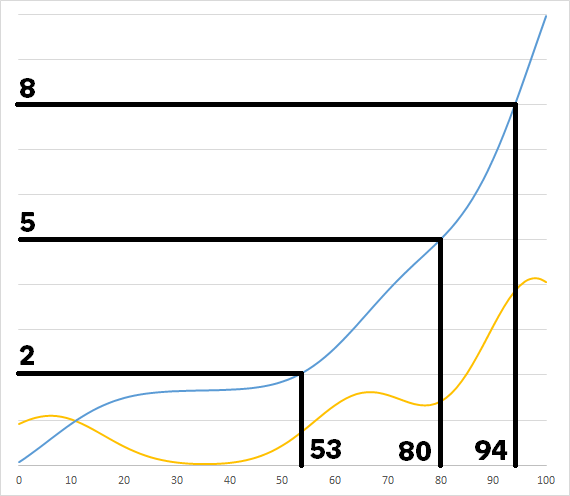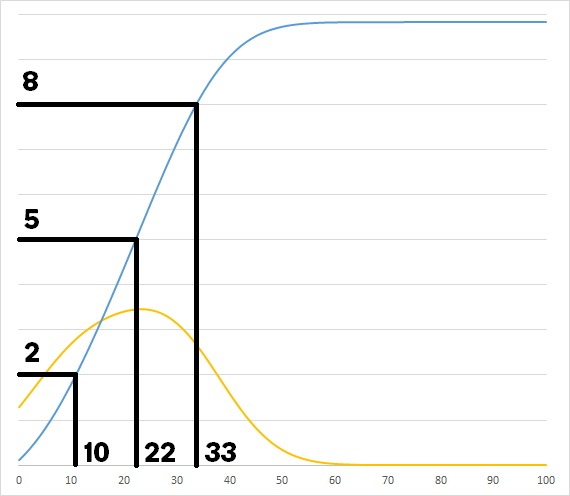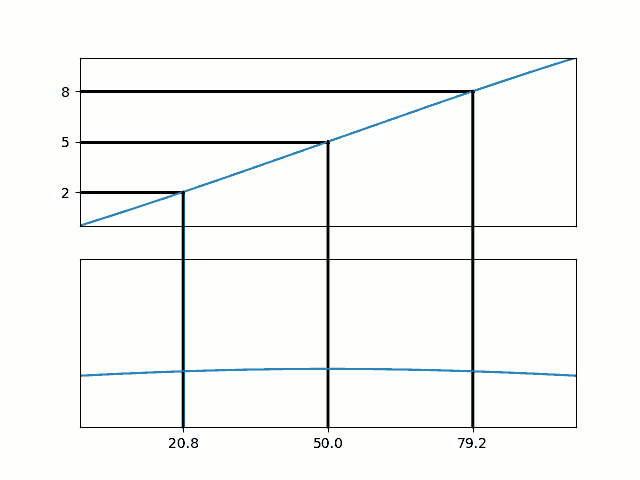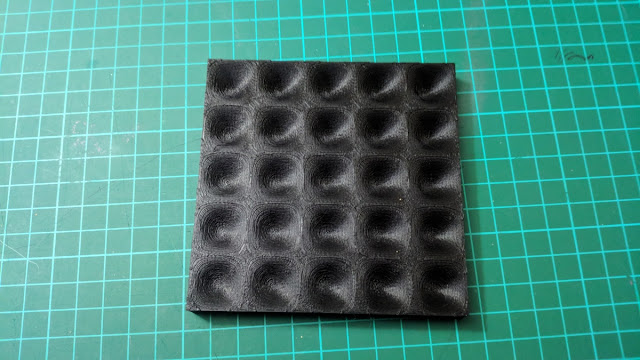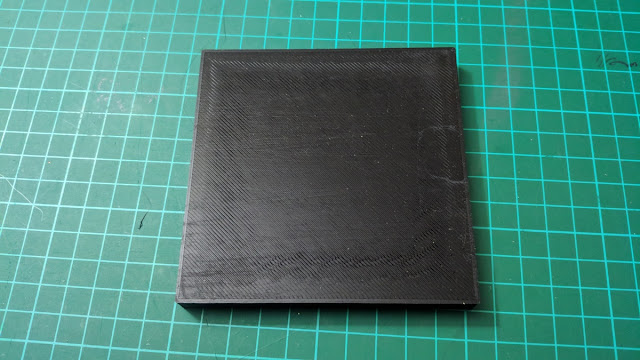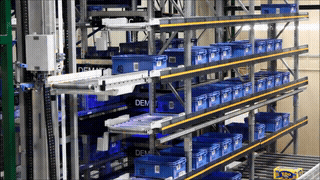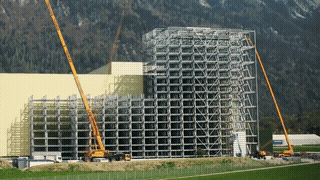A few weeks ago I was thinking about online grocery fulfilment and different ways of getting stock to customers faster. I had some ideas about the form factor of the facilities involved and thought I'd write about what I'm calling the Suburban Fulfilment Centre (SFC).
There are many important factors that add up to make a good online shopping experience, but when you strip away everything else, customers want a service that is fast, has a large range of products, and has reasonable fees. An important way to accomplish this is to do something that I call "tightening the loop". The time between a customer buying something and the stock being replenished and available for reorder needs to be as small as possible. It's important to have stock for customers to buy, but if you don't have a stock quickly flowing in to replace it you've failed.
Unlike regular parcel delivery, grocery shipments have some constraints that makes the process more challenging. Parts of the order need to be refrigerated, and some parts have a short shelf life. You can't just put a bottle of milk and some bananas in a box with some bubble wrap and ship it across the country in a cost effective manner. These constraints mean you need to have a supply of stock close to the final destination. If you're astute, you may have noticed that I just described a grocery store. Let's play with that idea.
What's really needed is a supermarket that's able to supply a much larger range, but keeping the online shopping model at the forefront of the planning. Around my local area a lot of 5 storey apartments are being built and I started to wonder if these could fill the roll. If an fulfilment centre with the exact same external appearance was built with a ground level drive-through, the only noticeable difference would be traffic to and from the centre. It would blend into the surrounding area and supplant current facilities that don't fit into the surrounds. To explore the idea, I selected a local set of apartments to study and run some numbers on.
 |
| Apartment Building |
To further illustrate the idea, I've included some screenshots from StreetView of a storage company in Brisbane with a McDonald's wedged underneath it. The drive-though runs under the building and is similar to what I pictured for an ideal pick up location.
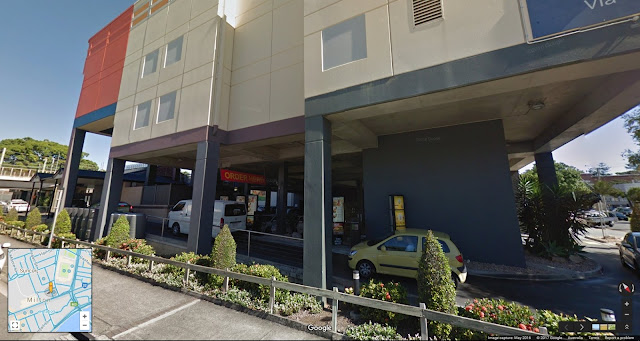 |
| Ground Level Drive Through |
Although I've been talking about a drive through for customers picking up orders, it would also serve as a loading dock for receiving stock and dispatching orders that get delivered directly to customers. Obviously there needs to be separation of different kinds of traffic for safety reasons, but there would be multiple drive-through lanes and when needed, one could be shut down and isolated for a delivery or dispatch.
 |
| Ground Level Drive Through |
So how much space do we have to play with? The apartment shown above has a gross floor area of 419 m².
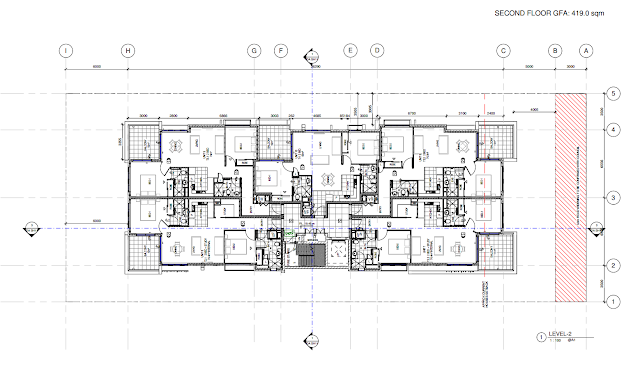 |
| Apartment Floor Plan |
The height of the levels 1 to 4 is 11.2 meters. This gives us a volume of 4700 m³. But what does that actually mean? How much range can we fit in that volume?
 |
| Apartment Height |
Let's look at the floor plan of a supermarket and do some visualisation exercises. It should be immediately obvious that there is a lot of unused floor space, what's not seen is that of the space that is utilised a lot of it is empty space. Next time you go shopping look at the displays and imagine what would happen if all the shelving suddenly vanished. How big would the pile of stock on the floor be? Typically shelves are utilised fully side to side, but vertically they might be only 70% full, and front to back they might be only 70% full on average. Therefore it's not outrageous to suggest that volumetrically, the shelves are only half full.
 |
| Supermarket Floor Plan |
How much does a supermarket hold though. Let's do some Fermi approximation.
10 aisles × 2 meters high × 1 meter wide × 15 meters long × half full = 150 m³
Let's say that the grocery department holds two thirds of all the stock in a store. This means that in total a store holds 225 m³ of product.
Just as a sanity check, that's equivalent to the volume of 92 × 1.8 m high Australian pallets. From my experience that sounds about right to fill a store from empty.
Another important number to remember is that an average supermarket stocks about 15 thousand different items. This would mean that each item on average occupies about 15 L of space. That may seem wrong but some items need much more and some need a lot less, and remember this is the raw volume of the stock, not shelf space.
Let's look at how much space a purpose built fulfilment facility uses. The image below is of a supermarket dark store without customers. This makes it easier to fulfil online orders by staff manually picking individual orders. As you can see though, not much of the facility is actually occupied. It's a giant waste of space. I can understand why they've done it though. It's a cheap and easy way to get started with online fulfilment without going all in automating the process. I'm still surprised that going all in is questioned. Amazon did it and look at how well it worked out for them.
 |
| Current Dark Store Layout |
I keep talking about wasted space but what's the alternative? The system in the animation below is an automated tote storage and retrieval system by Dematic. There's wasted space in this example but the design can be optimised to use a lot more space of a building. It transfers the stock to a picking station where an operator assembles orders. This configuration is referred to as a goods to person solution, which means operators don't have to walk to assemble orders. It also reduces bending, reaching, and lifting.
The other important advantage of this is that each tote is traceable and for perishable food, its use by date is also known and action can be taken to clear the stock before it's wasted.
Some items are so small that they may only fill part of a tote, in these cases a divider is used. In some cases items are too large to fit and will need to be stored in a bulk handling area. Over time a manufacturer may also alter their products to be tote friendly as it may offer a cost saving.
Let's circle back to the concept of the suburban fulfilment centre with a 4700 m³ volume. Let's say only one third of it is used for a stock management system like the one by Dematic above, and of that third only one half of it is full. That's a raw stock volume of 783 m³. If each item takes up 15 L of space that means the building can hold about 52 thousand items. There's a lot of assumptions in my calculations and the number could be much higher or lower but I think it's worth investigating further. Especially when you take into consideration that extra items above what would normally be stocked in a supermarket would most likely take less space due to lower demand.
Each SFC doesn't need to hold the full range a service offers either. It may only need to hold 30 thousand core items and 20 thousand supplemental items. There may be multiple facilities reasonably close to each other that may hold different supplemental items and a few times a day small vans move stock between them.
The SFC would also be used to supply nearby retail spaces of the company with low demand items. that are a bit esoteric. Ask yourself if a supermarket really needs that many packets of black dye on the shelf or are they only there because that's how many come in a box. It's a waste of space and it's money sitting on the shelf.
Another consideration is the capacity of the drive through. If two lanes are open for 14 hours a day and a pick up take 2 minutes, that's 840 customers per day at capacity. If they each take a 200 L trolley load that's 168 m³ of stock per day which the facility can easily hold.
I do actually have a serious reason for thinking about this problem. The less interaction staff have with stock the better. At the moment it's common practice for stock to arrive in store on a pallet like the one seen below. Think about that for a moment, at the warehouse people manually assemble these pallets and at the store people manually disassemble them. The only outcome of this process is people with injuries from a lifetime of manual labour. Finding meaningful replacement work for these people is important but I believe that a company has a moral obligation to minimise injuries where possible.
 |
| Pallet of stock |
Finally to give you an idea of what the inside of what one of these facilities look like, the animation below is of a warehouse that does basically the same thing, only with pallets. Nothing I'm talking about is new, it's just a scaled down version of what's currently happening.
I should point out that all ideas are my own and not those of my employer. I've also purposefully used images publicly available online instead of using my own.












